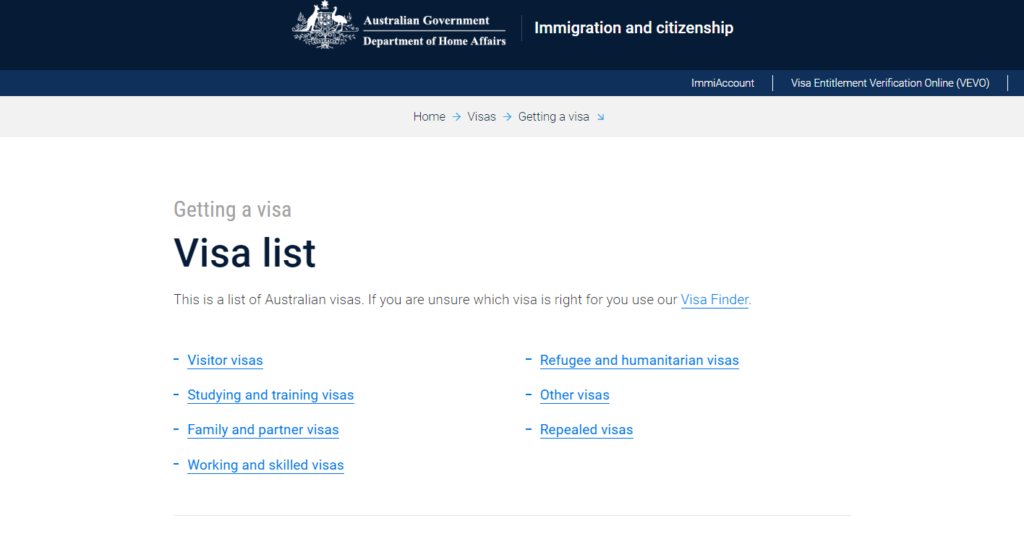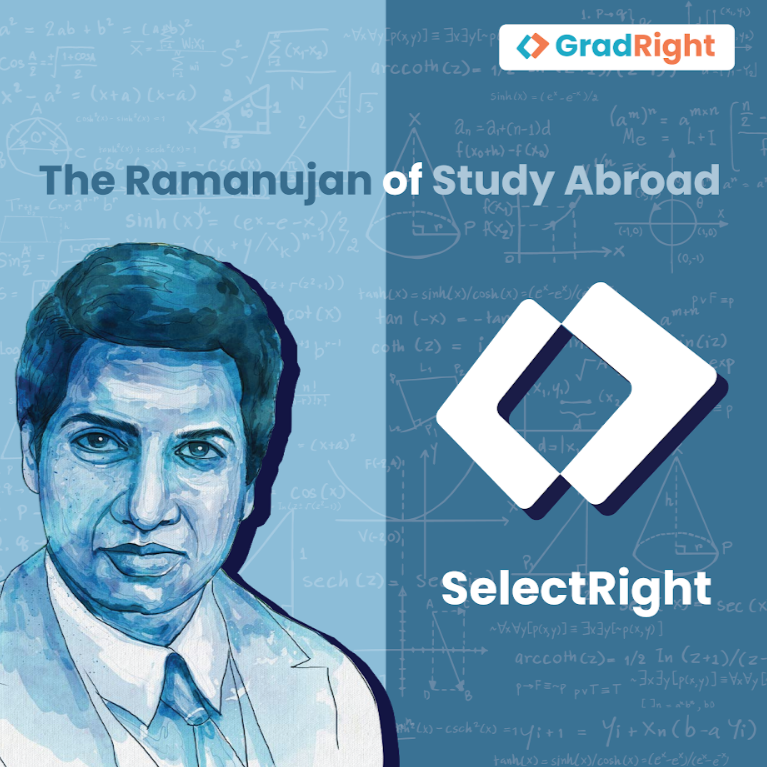Now study in Australia. It has become a top destination for students considering higher studies abroad.
In the 2023 financial year alone, over 183,000 students choose Australia for their higher education on temporary visas. This marked a significant rise from the 98,000 students in the previous year.
So, if you’re considering higher studies in Australia, you’ll need to understand the admission process, scholarship requirements, visa applications, and potential benefits, especially when the demand to study in Australia has increased so much.
That’s why we’ve done all the research and curated this guide to help you through each step.
Student requirements for Australia
If you’re an international student wishing to study in Australia after the 12th (or after your graduation in India), know the pre-requisites.
Language proficiency tests
Like most countries, English is the primary language of instruction in Australia. Hence, non-native speakers from across the globe studying in Australia must take a language proficiency test.
All courses to study in Australia will require that you score more than a certain minimum score to be eligible. These cut-off scores vary depending on the university and program.
Here are the language proficiency exams that the Australian universities consider:
- International English Language System (IELTS)
- Test of English as a Foreign Language (TOEFL)
- Pearson Test of English (PTE)
- Occupational English test (OET)
- Cambridge English (CAE or C1 advanced)
- Duolingo
Note: English language proficiency requirements relevant for you will also depend on the type of Australian visa you are applying for. For instance:
- A student visa demands a minimum overall IELTS score of 5.5, whereas a vocational training visa requires proof of Functional English.
- Permanent work visas like the Employer Nomination Scheme demand at least Competent English.
- Temporary Business Innovation and Investment visa requires Functional English.
To ensure you meet the specific English language requirements for your chosen visa, consult the Australian government’s official immigration website.

This resource provides the most current information and guidelines on the necessary English test scores for different Australian visas.
Australian study visa
A student visa is crucial to staying and studying in Australia for your coursework.
Your study visa also allows you to opt for part-time work alongside your studies to earn that extra pocket money,
Here are three visa categories most relevant for students who want to study in Australia:
- Student visa (subclass 500)
- Student Guardian visa (subclass 590)
- Training visa (subclass 407)
Let’s understand each of these categories in detail.
Student Visa (Subclass 500)
This is the primary visa to study in Australia for international students enrolled in a full-time study course.
Under this visa, you can stay in Australia as long as your course duration is due, plus an additional six months after graduation.
It allows part-time work for students studying for a master’s in Australia.
Students can work up to 40 hours per fortnight, and full-time during semester breaks. This privilege helps students manage living costs while studying in Australia.
Student Guardian visa (subclass 590)
This visa is for parents or legal guardians of international students under 18 studying in Australia.
It allows the guardian to live in Australia for the duration of the student’s course or until the student turns 18. However, the holder of this visa cannot work.
They are only expected to support the student and provide accommodation and welfare.
Training visa (subclass 407)
This visa is for those looking to come to Australia temporarily to participate in occupational training or professional development.
It suits people who want to improve their skills in a specific field and require sponsorship from an Australian organization.
The visa can last up to 2 years, depending on the nature of the program.
Also read: Top Exams Required to Study in Australia For Masters & Undergrads
Academic requirements
Here is an overview of the academic qualifications required for students who wish to pursue higher education in Australia.
- After completing their Class XII (10 + 2), applicants must have at least 60% marks for diploma-level courses in Australia.
- They must have a degree equivalent to the Australian Senior Secondary Certificate of Education.
- To be eligible for a bachelor’s degree, students need to have scored 65% or above in their Class XII exams.
- Students need to have successfully completed a three-year bachelor’s degree to be eligible to study for a master’s in Australia.
Documentation
Proper documentation is a crucial part of your admission process to study in Australia. Let’s find out which documents you will need.
- Confirmation of Enrolment (CoE): Certificate issued by your Australian education provider that confirms your registration in a course listed under the Commonwealth Register of Institutions of Courses (CRICOS).
- Valid Passport: Must be valid for at least 6 months from the date of your visa application.
- English Language Proficiency Certificate: Proof of proficiency with acceptable scores in IELTS, TOEFL iBT, PTE Academic, OET, or CAE.
- Health Checkup and Insurance: A health examination certificate from a doctor and proof of Overseas Students Health Cover (OSHC), which is a health insurance for international students and their dependents in Australia.
- Proof of Funds: Evidence shows sufficient funds for travel, living, and tuition costs.
- Penal Clearance: A police clearance certificate to verify character and criminal record status.
- Certified Copies of Academic Transcripts and Passports: Authentic copies of all educational qualifications and passports.
- Passport-size Photographs: Four recent head-and-shoulders photographs against a plain background with your name on the back.
- GTE Statement: A Genuine Temporary Entrant (GTE) statement outlining your intentions and reasons for studying in Australia.
- Welfare Arrangements for Under 18-Year-Olds: If under 18, a Form 157N is required for nominating a student guardian, along with confirmation of accommodation and welfare from the educational institution.
- Employment History: Recent CV or resume along with pay slips, if applicable.
- Credit/Debit Card: Use this method to pay the visa application fee online, which is currently AUD 710 (subject to change).
- Additional CoE: If you are taking an English language course or a foundation course before your main program, an independent CoE for each course is required.
Additional entry requirements for international students
Depending on the program and university, students might need to provide additional materials as part of their application:
- Standard X and XII Marksheets: Essential for undergraduate applications.
- Bachelor’s Degree Certificates: Memorandum of marks, degree certificate from respective undergraduate college for postgraduate studies.
- GMAT and GRE Scores: Required for MBA or business-related postgraduate programs.
Benefits of studying in Australia
Here are some of the key benefits of pursuing higher studies in Australia:
Australia is home to world-class universities
Whether you choose the University of Melbourne, ranked 63rd, or the University of Sydney at 96th (as per QS rankings) you’re guaranteed a quality education that will be respected and valued globally.

Australian universities and colleges offer globally recognized degrees
Degrees from Australian universities are internationally acclaimed and accepted by the Tertiary Education Quality and Standards Agency (TEQSA).
Several universities are members of global accreditation bodies, such as the Association of Commonwealth Universities (ACU) and the Group of Eight (Go8), opening up vast international career opportunities for graduates.
Students can get scholarships and financial support for studying in Australia
Australia offers scholarships that help reduce tuition and living costs. It makes higher education more accessible to international students.
Scholarships like the Australia Award Scholarship and the Global Excellence Scholarship cover significant portions of tuition fees and sometimes living expenses, easing the financial burden on students.
Other scholarships include:
- Australia Awards Scholarships: This prestigious scholarship is funded by the Australian government’s Department of Foreign Affairs and Trade.
- Australia APEC Women in Research Fellowship: This fellowship program supports women from APEC economies to pursue research opportunities in partnership with Australian universities.
- Destination Australia Scholarships: These scholarships aim to attract and support international and domestic students to study in regional Australia.
Also read: Scholarship to Study in Australia For Indian Students: How To Apply
Cost of living in Australia is relatively affordable in comparison to the USA and the UK
Compared to other popular study destinations, such as the UK and the USA, Australia offers a relatively lower cost of living, which includes housing, food, and transportation.
In 2024, the cost of living in Australia is ₹60,690, almost 40% lower than in the USA.
This affordability, combined with available financial aid and scholarships, makes Australia an economical option for higher education.
Students can choose from many different courses
With 1,100 institutions and 12,000 courses, Australia allows students to tailor their education paths to their needs and aspirations.
In addition to engineering, science, business, and humanities, students can opt for several unconventional courses: actuarial sciences, earth science, and geological engineering too.
However, for medical courses, students must have their secondary and post-secondary education in science subjects. Similarly, for technical subjects like engineering, students must have math, physics, and chemistry as their post-secondary school subjects. These are basic requirements to choose courses depending on your interest.
Students can work while they study in Australia
Australian regulations allow international students to work up to 20 hours per week and 40 hours over a fortnight during the semester and full-time during vacations.
However, they must maintain “satisfactory course attendance” and “satisfactory course progress” while working. To find jobs or work that can be doable, you can refer to Adzuna, Career One, Seek, Grad Australia, or even LinkedIn.
Students get to enjoy great quality of life in multicultural cities
Australia offers a vibrant lifestyle and a multicultural environment. In cities like Melbourne, Sydney, and Brisbane, students not only enjoy excellent living conditions but also immerse themselves in cultural hubs. Students also get to experience festivals and events such as the Lunar New Year, Diwali, and Greek festivals.
Students have excellent research opportunities in Australian universities
Australian universities offer strong support to research students to prepare for future employment. This is evident from a very impressive employment rate of 85.6% (2022) for international postgraduate research-level students.
Students have excellent opportunities for post-study employment
Australia’s post-study work visa options allow graduates to remain in the country and work.
Under visa subclass 485, you can obtain a 2-4 year post-study work permit after completing your studies.
This opportunity is vital for gaining international work experience and can often lead to extended career opportunities in Australia or globally.
Also read: Why Study in Australia: Top Reasons To Pursue Higher Studies in the Australia
Next, let’s find out how you can navigate the admissions process.
Admission process for studying in Australia
The admission process can seem daunting. However, with the right information and preparation, you enhance your chances of acceptance.
Here’s a step-by-step guide to help you through this crucial phase.
Step 1: Research and shortlist your course and university
Australia offers diverse courses from Arts and Humanities to Science and IT. So, once you begin your journey, select a course and university that aligns with your academic goals and interests. Consider the university’s reputation, location, tuition fees, campus facilities, and available scholarships.
Step 2: Track admission intakes
Australian universities typically have three main intakes: February, July, and November. Keep an eye on these months because application deadlines usually fall 2-3 months before the start of the course.
Step 3: Take the language proficiency test
Before you begin, ensure you meet the basic eligibility, which is being proficient in English. As English is the primary language of instruction, non-native speakers must submit scores from tests like the IELTS Academic or PTE Academic to demonstrate their proficiency.
Step 4: Start the application process
Each university and course may have specific eligibility criteria. Make sure you meet these requirements to avoid any last-minute surprises. Check the university’s official website for detailed information and guidance to begin the application process.
Step 5: Gather documentation
Prepare your application packet with the following documents:
- Academic transcripts from previous studies
- Proof of English proficiency
- Experience letter, if applicable
- A well-crafted Statement of Purpose (SOP)
- Letters of Recommendation (LORs)
Once you gather all the documentation, cross check with the official website of the university. If all the required documents are there, then submit the application.
Step 6: Wait for acceptance letter and visa
Once your application is submitted, wait for the admission decision. If you receive an offer letter, you must pay the tuition deposit to receive your Confirmation of Enrolment (CoE). This document is crucial for applying for a Subclass 500 Student Visa. Remember, the process of applying for the visa can begin before you receive your admission letter, as some banks let you apply based on your entrance exam scores (such as GMAT and GRE), and only need the admission letter at a later stage.
Step 7: Prepare for departure
Once the visa and university process are complete, you can breathe a sigh of relief.
Get your medical, dental, and oral checkups done, and prepare for your departure at least 1 month in advance.
Now let’s take a look at how to go about step 1. You have to begin by comparing courses and universities. Let’s find out how you can do that.
Top courses to study in Australia
You’ll easily find a course that matches your interests and academic background. However, the problem is that there are too many options. So let’s get a sense of some of the top courses for studying in Australia.
| Top Specialization | Top Courses |
| Engineering | Masters in Computer Engineering Science |
| Medicine | Masters in Medicine |
| Business studies | Masters in business administration |
| Humanities | Masters in humanities and arts |
| Accountancy | Masters in Accountancy |
These programs open doors to hands-on projects and in-demand internships that can help you gain practical skills and prepare you for the workforce.
After you select a program, you will need to shortlist some universities to which you’ll apply.
Also read: Best Courses to Study in Australia for Indian Students
Top universities to study in Australia
Australian universities occupy top places in the top 100 of the 2024 QS World University Rankings.
Below are a few universities that have been ranked at an all-time high in 2024.
| University | Global Rank |
| University of Melbourne | 14 |
| University of Sydney | 19 |
| University of New South Wales (UNSW Sydney) | 19 |
| Monash University | 42 |
| University of Queensland | 43 |
There are over 6,000 universities in Australia that offer top-notch education but differ in terms of tuition fees and program offerings and have varied financial aid options. So, students need a better mechanism than rankings to choose the best fit for their education.
To compare and find universities that provide the most value, are affordable, offer scholarships, etc., can be tiring.
That is where SelectRight helps.
SelectRight uses AI to find the best university for you. It checks your qualifications against 40,000+ programs from 4,000 universities to find the perfect match.
No doubt, it can save you from endless hours of research and confusion.
Here’s how SelectRight helps:
- Register and create your profile for free.
- Sit back as SelectRight’s AI algorithm matches your academic background, financial needs, and desired location with universities..
- Check the recommended options and shortlist universities of your choice.
- Connect with a dedicated SelectRight advisor who will guide you to make the best choice for your future.
It’s like having Ramanujan crunch the numbers for you, so you go to a massive-RoI university.

Of course, this is a life-shaping decision. So you’ll need time, particularly to do a cost-benefit analysis or an RoI analysis. For this, it helps to have a sense of the costs of studying in Australia.
Cost to study in Australia
Understanding the costs of studying abroad is crucial for students and their families. In Australia, these costs are broadly categorized into tuition fees and cost of living.
Tuition fees
Tuition fees in Australia depend on the degree and the university you choose. Here is a general idea of what international students can expect to pay annually:
- Undergraduate Bachelor Degree: ₹11 lakhs – ₹25 lakhs
- Postgraduate Master’s Degree: ₹18 lakhs – ₹41 lakhs
- Doctoral Degree: ₹10 lakhs – ₹23 lakhs
- Vocational Education and Training: ₹2 lakhs – ₹12 lakhs
- English Language Studies (per week): Approximately ₹16,800 per week
These figures represent a broad range, with specific costs depending on the university and the course.
For example, courses in medicine and veterinary science are generally more expensive.
| University Name | BE/BTech | MS | MBA |
| Australian National University (ANU) | ₹27 lakhs | ₹27 – 28 lakhs | ₹38 lakhs |
| University of Melbourne (Unimelb) | ₹24 lakhs | ₹23 – 28 lakhs | ₹51-83 lakhs |
| University of Sydney (USyd) | ₹25 – 29 lakhs | ₹22 – 29 lakhs | ₹28 – 30 lakhs |
| University of Queensland (UQ) | ₹25 lakhs | ₹23 – 61 lakhs | ₹46 lakhs |
| University of New South Wales (UNSW) | ₹27-36 lakhs | ₹19 – 26 lakhs | ₹67 lakhs |
Cost of living
The estimated monthly cost of living for a student in Australia is around ₹1.2 lakhs. This estimate helps you plan monthly budgets and financial requirements for your studies.
Monthly living expenses for students in Australia
- On-campus housing is popular for students due to convenience and security. The average cost of on-campus accommodation is approximately ₹20,674- ₹46,663 per month.
- Public transportation is reliable across Australian cities. A monthly transportation pass typically costs around ₹3,395, making it affordable for daily commutes.
- Basic amenities like electricity, water, internet, and groceries cost about ₹8,000 – ₹10,000 per month.
- Students typically allocate around ₹4,000 – ₹6,000 monthly for entertainment, including dining out, movies, and social activities.
Even though studying in Australia isn’t as expensive as studying in the USA and UK, the costs will add up.
A great way to reduce your financial burden is to apply to all scholarships you are eligible for. Let’s find out more.
Scholarships to study in Australia
Australia offers various scholarships to help international students manage the financial aspects of studying abroad. These scholarships cover tuition fees, including living expenses, insurance, and travel allowances.
Below is a detailed overview of some notable scholarships available for those studying in Australia.
Key scholarships for studying in Australia
| Scholarship Name | Description | Coverage |
| Australia Awards Scholarship | Funded by the Australian government, it targets students from Asia, the Pacific, the Middle East, and Africa. | Full tuition, living expenses, and allowances |
| Destination Australia Scholarship | Aims to support both domestic and international students studying in regional Australia. | Varies; often includes tuition and living expenses |
| Endeavour Scholarships and Fellowships | Supports postgraduate study, research, and professional development in Australia. | Comprehensive funding, including travel and establishment allowances |
| VU International Excellence Scholarship | Offered by Victoria University for outstanding academic performance. | Up to ₹6 lakhs towards tuition fees |
| Swinburne International Excellence Scholarships | Provided by Swinburne University based on academic merit. | Up to 75% of tuition fees |
| Deakin Vice-Chancellor’s International Scholarship | Open to all prospective international students at Deakin University with high academic achievement. | Up to 100% of tuition fees and participation in the VCPEP |
| University of Newcastle Academic Excellence Scholarships | Awarded based on academic excellence during undergraduate studies. | ₹5 lakhs for progressing students |
For most students, scholarships will cover only a part of the total costs of studying in Australia. So it helps to know how you can fund your education via an education loan.
Education loans for studying in Australia
Below is a summary of the typical loan terms offered by major banks:
| Bank | Rate of Interest | Tenure | Loan Amount |
| HDFC Bank | 13.80% p.a. | Up to 15 years | Custom, based on requirement |
| State Bank of India | 10.65% p.a. onwards | Up to 15 years | Up to 90% of educational costs |
| Union Bank of India | EBLR + 0.25% to 0.50% | Up to 15 years | Varies, usually up to 100% for Go8 universities |
| Axis Bank | 13.70% p.a. onwards | Up to 20 years | Generally unsecured loans |
As you can see, you have many options. But choosing can be tough.
That’s where FundRight steps in.
FunRight is a tool that helps you compare student loans from 15+ Indian and international lenders; it is already trusted by over 60,000 Indians for their study abroad needs. Let us see how FundRight works.
How FundRight works
- Start by signing up and providing the necessary details.
- Get loan offers from top 15 banks and NBFCs in India.
- Get the guidance of an expert financial advisor from and negotiate even better loan terms.
- Safely upload your documents through the platform.
- Get your loan sanctioned in as little as 10 working days.

Join the 60,000 students who found their best loan with FundRight. Check your offers.
Remember, you have to think of studying abroad as an investment. Once you get a job, you will be able to repay your education loan. So, next up, let’s learn about your job prospects in Australia after you complete your education.
Job prospects in Australia
Recent changes to immigration laws in Australia allow graduates to work for up to eight years without a sponsorship visa after their studies, which has enhanced the appeal of pursuing higher education in Australia.
Here’s a glance at the promising job sectors in Australia and the opportunities they present:
| Sector | Notable Roles |
| Healthcare | Nurses, Doctors, Healthcare Administrators |
| Education | Teachers, Education Administrators, Counselors |
| Construction | Civil Engineers, Electricians, Architects |
| Information and Communication Technology | IT Managers, Network Engineers, Software Developers |
| Professional Services | Engineers, Scientists, Research & Development Experts |
Around the time when you complete your degree, you will need to acquire the correct visa that gives you the right to work in Australia.
Post-study work permit in Australia
Australia offers a Post-Study Work Visa (subclass 485) that allows international students who have recently graduated from an Australian institution to live, work, and study in Australia temporarily.
Understanding the terms and duration of this visa can help you plan your post-graduate activities effectively.
The duration of your stay on a Post-Study Work Visa depends on your qualifications:
- Bachelor’s Degree: 2 years
- Bachelor’s (Honors), Master’s by Coursework, or Master’s (Extended): 3 years
- Master’s by Research: 3 to 5 years
- Doctoral Degree: 4 to 6 years
- Additional provisions apply for select degrees and qualifications, extending eligibility by up to 2 years.
You can also find other occupations and qualifications on the official site to check whether you’re eligible for post-study work rights extension or not.
Next, let’s answer some frequently asked questions about studying in Australia.
FAQ
The maximum validity is typically 5 years, aligned with your course duration plus a few months post-study.
While dependent on factors like nationality and financial stability, Australia boasts a high student visa approval rate of 96.8% in 2022-23.
Depending on your qualifications, you can stay for two to six years after graduation to work and gain experience.
Gaps in education are evaluated on a case-by-case basis, but a well-explained gap of 1-2 years is commonly accepted.
To apply, secure a Confirmation of Enrolment (CoE), meet health and character requirements, show proof of funds, and submit your application online.
As an international student, you can work up to 20 hours per fortnight during the semester and full-time during breaks.
A minimum IELTS score of 6.0 or equivalent is typically required, varying slightly between institutions.
You must demonstrate sufficient funds to cover course fees, travel, and living expenses.
Yes, you can typically bring close family members with you to Australia on your student visa as dependents. This includes:
– Spouse or partner (including same-sex partners), provided you have been living together for at least 12 months.
– Children under 18 years old, or those still in continuous education (e.g., studying A-levels).
Important Note: The work rights of a dependent partner in Australia depend g on the student’s course of study:
– Bachelor’s Degree: Dependent partners can work up to 40 hours per fortnight.
– Master’s Degree (coursework or research) or Doctorate: Dependent partners have full and unlimited work rights.






